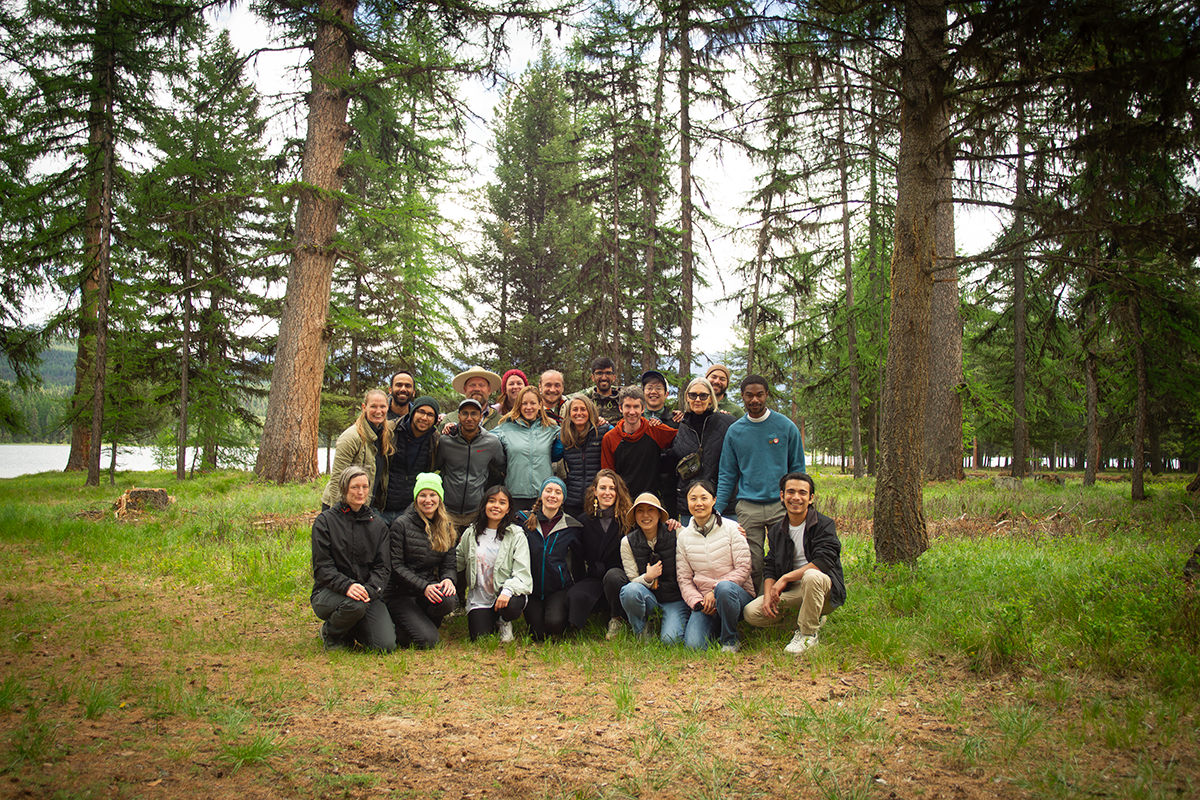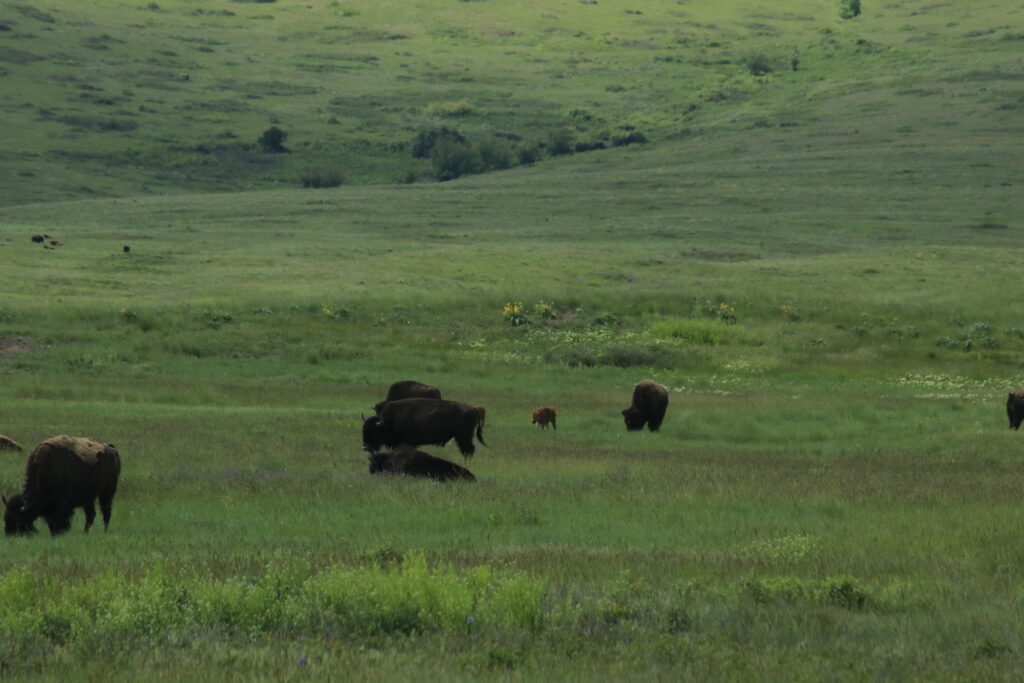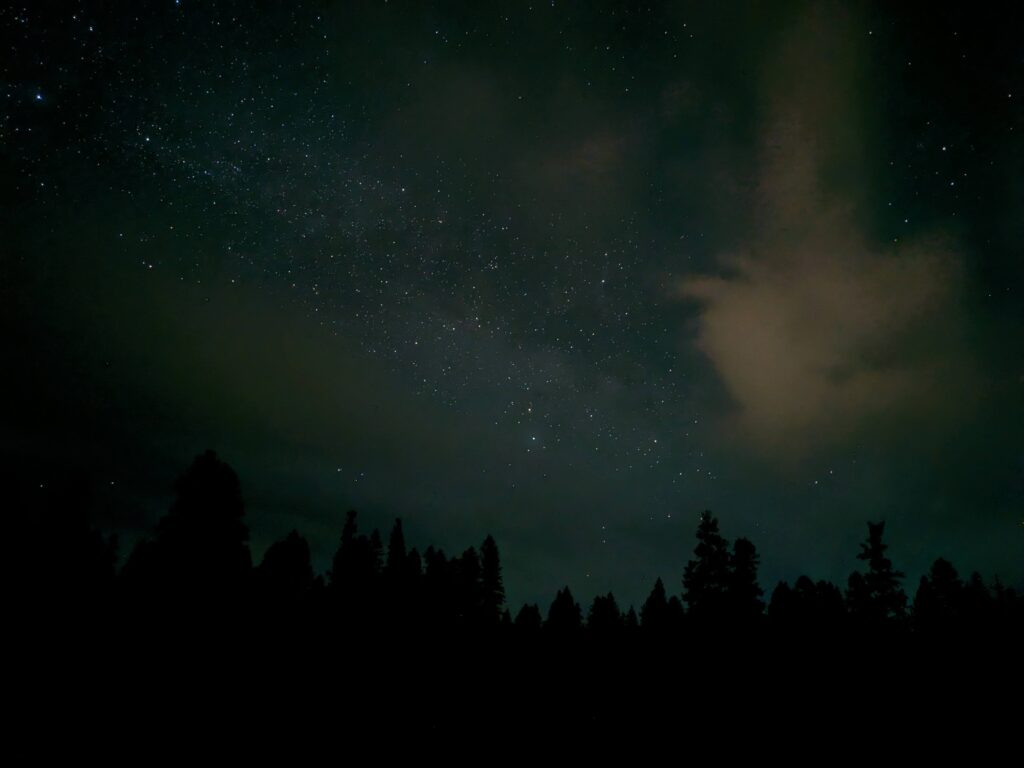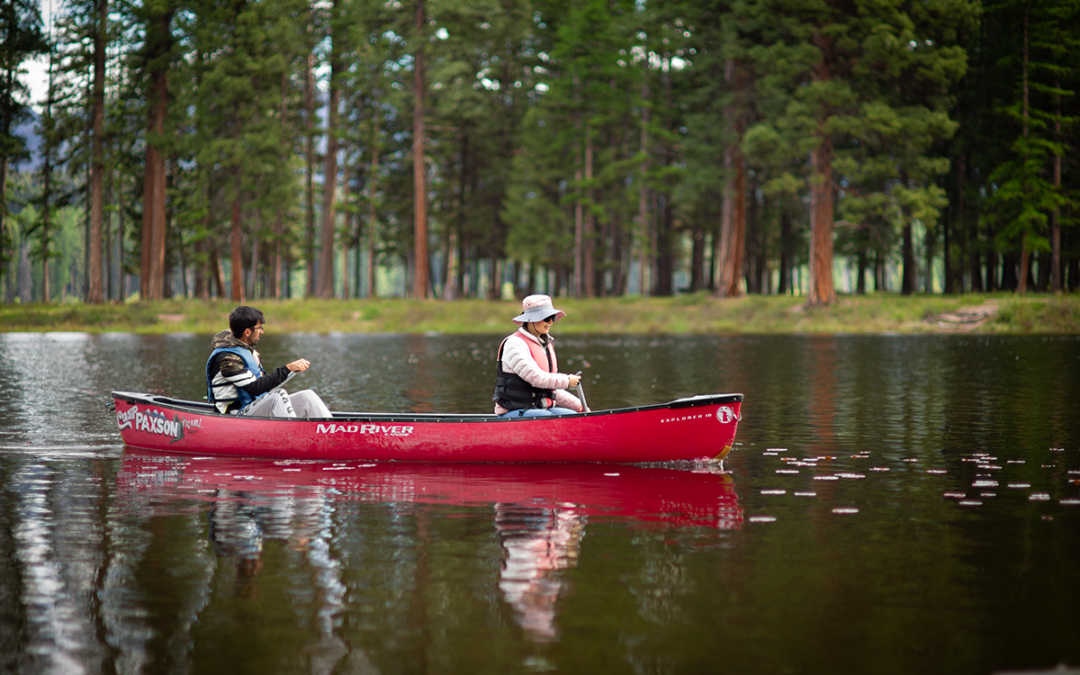Once again, the Biomimicry Institute has completed a weeklong nature immersion as part of our Launchpad Program. We brought together 20 of the most curious and creative minds from around the world in May to share ideas in the wilds of Montana, and reconnect with nature and themselves. It was a rare opportunity to slow down, listen to nature’s wisdom, and cultivate a culture of mutual respect.

The Biomimicry Launchpad started years ago with the goal of supporting innovators as they take their ideas from the lab to the marketplace, and that focus remains. But we continue to evolve to meet the needs of our participants and to have the greatest global impact. Currently we are exploring all the various pathways that biomimetic ideas might take to realization, and doing it with diverse and multidisciplinary cohorts. We are continuously learning, and looking to nature to understand how evolution interacts with groups and networks. In her book, Mushroom at the End of the World, Anna Tsing masterfully describes how our understanding is growing, how symbiosis is more common than once thought, and that natural selection may be more about relationships than individuals or genomes.
How can an early stage incubator learn from this wisdom? We are focussing on the power of collaboration and mutualism, bringing together diverse perspectives and insights, and facilitating meaningful connection. We are including artists and designers with scientists, engineers, and architects, and we are centering the voices of women and indigenous people in our programming. We are convening these groups to explore specific themes with one common thread: we are co-designing with nature as a primary stakeholder.
Last year we traced rivers and watersheds, asking the question: How does nature slow water down, soak it in, and rebuild damaged ecosystems? We started on a geologic scale, examining how volcanoes and glaciers shaped the landscape. Then we went upstream to a mega-mining site to see what happens when man overturns the land in search of metals. The attempts at restoration tell a story of hubris and then a gradual embracing of nature as model. Rows of crested wheat and concrete channels have given way to native plants and meandering streams. And we visited the most clever engineers in the ecosystem: beavers who had found ways to make life flourish where it struggled to take hold of a barren landscape.

This year we asked the question: How do ecosystems embrace the regeneration that comes with wildfire? We started at the CSKT Bison Range, where we got to observe these playful megafauna and consider how they shaped their ecosystems. We heard from indigenous speakers who told us about their struggles to preserve the bison and how fire was a part of their traditional ecological knowledge. Could rewilding bison and respectfully integrating traditional knowledge of fire management be important components of our efforts to reverse climate change? We were starting to look beyond notions of wildfire as a disaster and consider other ways of knowing.

We continued up the Blackfoot river into the Seeley-Swan corridor, and found a home amongst two pyrophytes: the Western Larch and Ponderosa pine. These fire-adapted trees have a thick and highly structured bark that insulates and protects the cambium, and allows them to thrive with regular fire activity. We saw the effects of decades of mismanagement and the aggressive thinning projects that are ongoing to protect valuable private property. We took the time to ask what ecosystem services are provided by fire and how does timber extraction disrupt those cycles. We visited an old friend, Gus, the largest larch in the US, who has lived through an estimated 40 fires in its 1000 years. There is important wisdom to be gleaned from these old-growth giants and quieting down enough to hear it is a skill worth cultivating.

Facilitating connection and cultivating these skills of quieting and listening is what we do on these retreats. It builds a culture of respect, respect for each other and respect for the natural world that inspires us so much. Nature cultivates cooperative relationships and incorporates diversity, and this year’s cohort fully embodies these principals. Bringing together the best and brightest to learn together, and from each other, will inspire, give hope, and create lasting connections that will result in real change-making. The diversity of skills and view points will reveal unexpected synergies that will make the value of the collaboration so much more than the sum of its parts.
We know we won’t answer all of our questions and that’s okay, it is the process of exploring big questions in a curious and collaborative way that will impact these innovators and creators as they continue their journey. Watch for more as the Biomimicry Launchpad continues to evolve and these collaborators integrate what they have learned into their work and lives.

For more inspiration about bison and wildfire and other biological strategies, check out asknature.org. For more information about the Biomimicry Institute and our Innovation support programs visit biomimicry.org.

